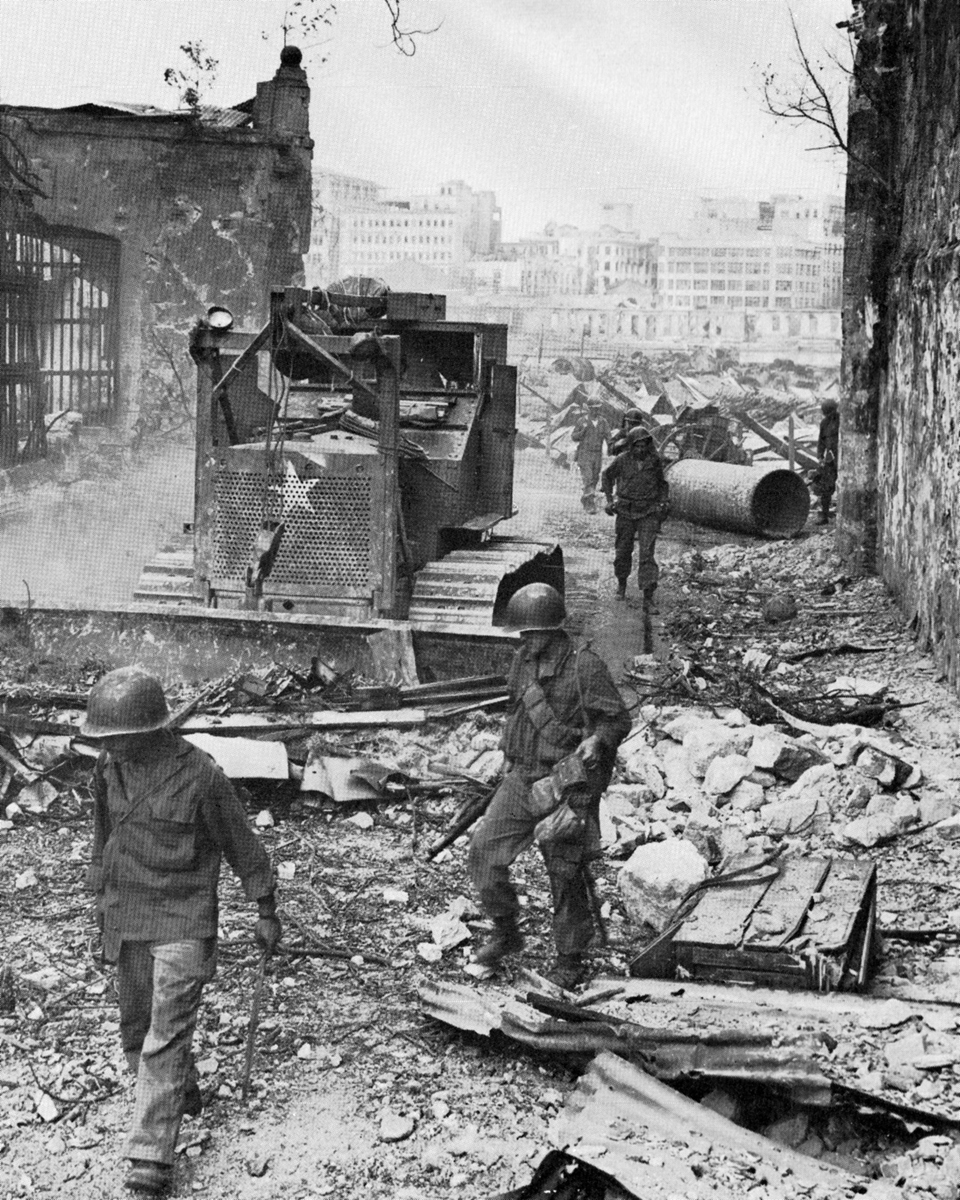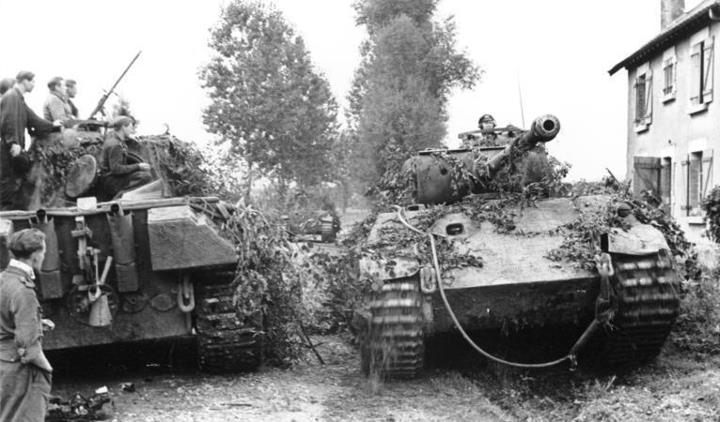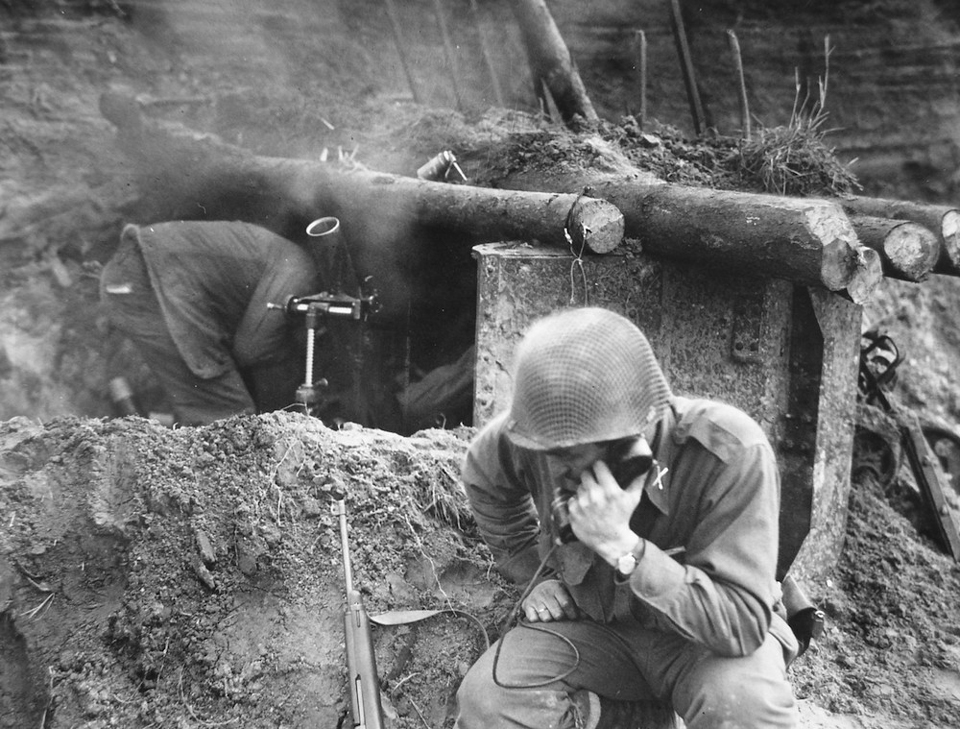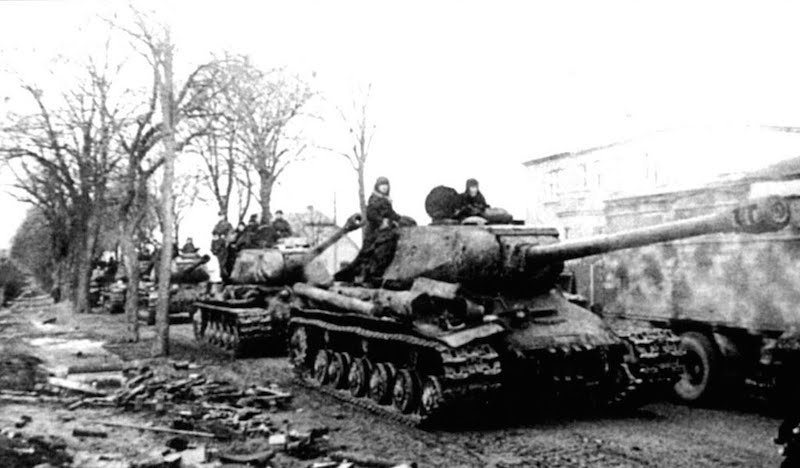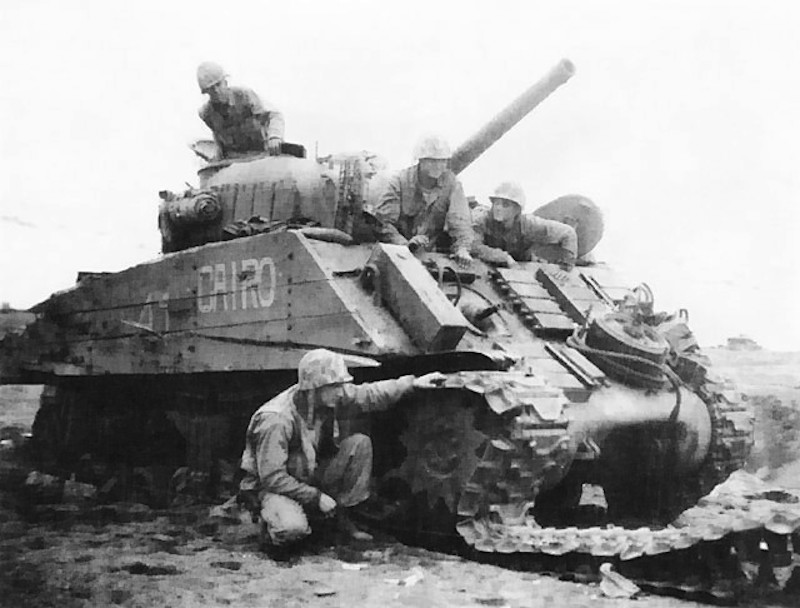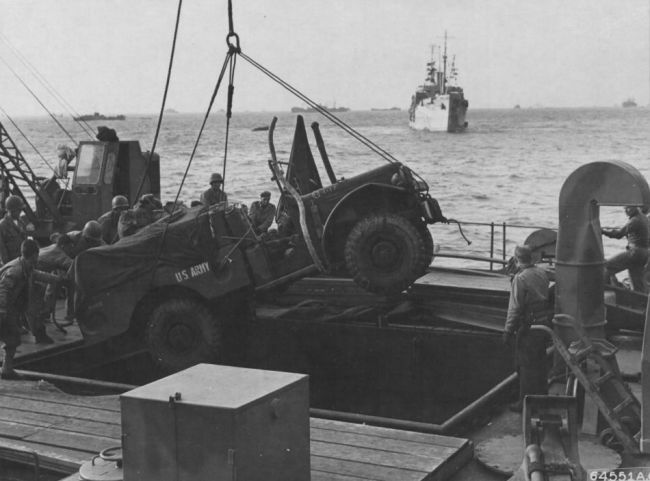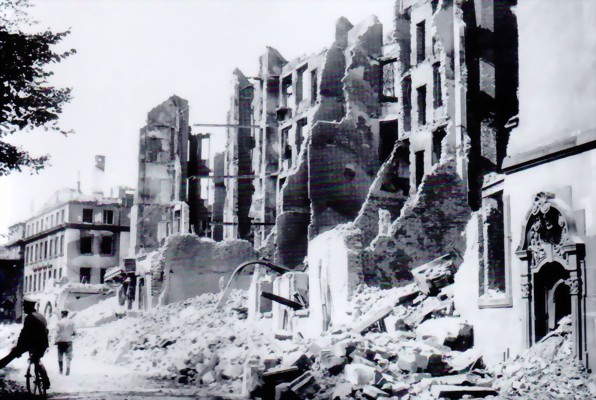Air Operations, CBI
BURMA- Nearly 100 10th Air Force fighter-bombers attack troops, artillery positions, road traffic, pack elephants, and supplies behind the Japanese Army battle front.
- 18 P-47s provide close support for British 14th Army ground forces near Mongmit.
- 4 P-47s attack a bypass bridge at Hay-ti.
- 5 308th Heavy Bomb Group B-24s attack shipping in the Gulf of Tonkin and South China Sea.
- 12 341st Medium Bomb Group B-25s attack Hwaiyuanchen and Ishan.
- 30 14th Air Force attack targets of opportunity across eastern and southern China.
- 23 fighter-bombers attack targets of opportunity in the Kiyang area.
- 19 fighter-bombers attack a barracks near Ishan.
- 12 fighter-bombers attack targets of opportunity in the Yoyang area.
- In their first penetration to the area, FEAF B-25s attack a fleet of junks and sampans near Hong Kong. Between 10 and 15 junks are claimed as sunk.
- 12 341st Medium Bomb Group B-25s attack six bridges in northern French Indochina.
Air Operations, East Indies
XIII Bomber Command B-24s attack the Jesselton and Tarakan airfields on Borneo.
[Air Operations, Europe
RAF BOMBER COMMANDDaylight Ops:
- 458 aircraft including 311 Halifaxes, 131 Lancasters and 16 Mosquitos of Nos. 4, 6 and 8 Groups to Mainz. The target area Mainz is covered by cloud and the bombing is aimed at skymarkers dropped on Oboe. No results are seen by the bomber crews, but the bombing causes severe destruction in the central and eastern districts of Mainz. This is the city's worst raid of the war. 1,545 tons of bombs are dropped. 5,670 buildings are destroyed, including most of the historic buildings in the Altstadt, but the industrial district is also badly hit. This is the last heavy raid on Mainz.
- 1 Halifax and 1 Mosquito are lost.
- 149 Lancasters of No. 3 Group carry out a G-H attack through thick cloud on the Alma Pluto benzol plant in Gelsenkirchen, but no results were seen.
- 1 Lancaster is lost.
Minor Ops:
- 82 training aircraft make a sweep over the North Sea to draw up German aircraft, 96 Mosquitos are sent to Berlin and 6 to Bremen, and there are 32 Mosquito patrols and 62 RCM sorties.
- There are no losses.
GERMANY:
- 363 1st Air Division B-17s and 378 3rd Air Division B-17s attack rail and road targets at Leipzig.
- 314 2nd Air Division B-24s attack a marshalling yard at Halle.
- 31 heavy bombers attack targets of opportunity.
GERMANY:
- 118 9th Air Division bombers attack three communicatinns centers, a rail bridge, and targets of opportunity.
- 9th Air Force fighter-bombers mount 235 effective sorties, including an attack against oil storage tanks at Frankfurt am Main.
AUSTRIA:
- XXII TAC P-47s attack rail cars at Villach.
- 12th Air Force B-25s destroy two dumps and a railway diversion bridge, and attack other bridges and bridge approaches.
- XXII TAC P-47s attack rail lines in the Brenner Pass and other areas of northeastern Italy.
- During the night, XXII TAC A-20s and A-26s attack rail lines, several marshalling yards, and signs of movement.
AUSTRIA:
- 15th Air Force heavy bombers attack marshalling yards at three locations.
- 15th Air Force heavy bombers attack a marshalling yard at Augsburg.
Air Operations, Formosa
- 21 90th Heavy Bomb Group B-24s attack shipping in Takao harbor.
- V Fighter Command fighter-bombers sweep western Formosa.
- A 35th Fighter Group P-47 downs 3 Ki-84 'Frank' fighters over Hogen at 1720 hours.
Air Operations, Malaya
During the night, 10 58th Very Heavy Bomb Wing B-29s sow mines in the Johore Strait while 1 B-29 sows mines in Penang harbor.
[Air Operations, Philippines
- 22 494th Heavy Bomb Group B-24s based on Angaur attack the Daliao and Libby airfields on Mindanao.
- 5th Air Force mount numerous support missions for US 6th Army ground forces on Luzon.
- V Fighter Command P-38s and 1st Marine Aircraft Wing F4Us attack airfields on Mindanao.
- As US 8th Army ground forces prepare to land on Palawan on February 28, 95 V Bomber Command A-20s bomb and strafe Japanese Army troops and supply areas from low level, then 44 V Bomber Command B-24s attack defenses with bombs, and 2 V Fighter Command fighter groups attack defenses with napalm.
Air Operations, Volcano Islands
- Task Group 52.2 TBMs and FMs provide support for US V Marine Amphibious Corps ground forces on Iwo Jima.
- 9 VII Bomber Command B-24s attack fortifications and artillery positions in northern Iwo Jima.
Battle of the Atlantic
The German submarine U-327 is sunk by US naval land-based aircraft (VPB-112) and British surface ships in the English Channel.
[Burma
In the British XXXIII Corps sector, the bridgehead established by the 20th Indian Div across the Irrawaddy is consolidated, after the Japanese have had to give up their efforts to liquidate it. In the British IV Corps sector, a brigade of the 17th Indian Div is air-lifted to Thabutkon while other units reach the outskirts of Meiktila. Units of the 19th Indian Div begin to break out of their bridgehead over the Irrawaddy at Habeikkyin and advance south toward Mandalay against heavy Japanese resistance.
[Diplomatic Relations
Lebanon declares war on Germany and Japan.
[Eastern Front
There is reduced activity in all sectors. Near Sarajevo the Germans re-open communications with the northwest, which had been cut by the Yugoslav and Bulgarian troops.
SOUTHERN SECTORArmy Group E opens the road to Sarajevo after it had been cut by partisans. This road has to be kept open until the units south of the city have been withdrawn otherwise the southern wing of Army Group E would be annihilated.
[English Channel
- The British frigate Loch Fada detects U-1018 by asdic and carries out several attacks sinking the U-boat.
|
|
- U-327 is sighted by a Liberator of VP-112 12 miles south of Wolf Rock. An attack is carried out in the dark by the British frigate Labuan of Escort Group 2. After further attacks in the same area by other ships of the group, it is concluded U-327 has been destroyed.
Germany, Home Front
Stricter rationing is ordered for German civilians.
[Iwo Jima
The very fierce fighting between the Marines and the Japanese is renewed on the 3 hills which overlook Airfield No. 2. Using bulldozers, flamethrowers and hollow-charge ammunition, the Americans eliminate the pill-boxes, gun emplacements and machine-gun posts one after another. But all their efforts are frustrated by the unexpected and violent enemy counterattacks, which drive them back to their original positions time after time. The nerve center of Gen Tadamichi Kuribayashi's communications is in this area.
A storm causes damage to a number of American ships in the waters of Iwo Jima, including the light aircraft carrier San Jacinto (CVL-30), the destroyer Colhoun (DD-801), the tanker Merrimack (AO-37), the transports President Adams (APA-19), Knox (APA-46) and Tolland (AKA-64) and the landing craft LST-779 and LST-809.
[Pacific
- The US submarine Blenny (SS-324) attacks a Japanese Convoy off French Indochina and sinks the merchant tanker Amato Maru (10,238t) off Cape Padaran.
- The US submarine Scabbardfish (SS-397) sinks the Japanese guardboat No.6 Kikaka Maru 100 miles northeast of Keelung, Formosa.
Philippines
On Luzon in the US XIV Corps sector the Americans proceed with the liquidation of the last centers of Japanese resistance in Manila. The 63rd Infantry captures Mount Pacawagan, near Manila, holding off violent Japanese counterattacks. But the positions captured on Mount Mataba have to be abandoned.
Units of the XI Corps effectively clear the Bataan Peninsula. Troops from a regiment of the XI Corps are landed on the southern coastline of the peninsula on the 28th, meeting up with their comrades advancing down the eastern coastline.
Corregidor is captured after the paratroopers of the 503rd Parachute Infantry Regiment eliminate the last Japanese positions on the extreme eastern tip of the island. The Japanese have lost nearlyl 4,000 men and 19 captured. The number of men buried alive in the tunnels is unknown. American casualties are 209 killed, 725 wounded, and 19 missing.
[Rumania
Russia establishes a pro-Soviert government in Rumania.
[Western Front
The Canadian II Corps, Canadian 1st Army, presses on with Operation BLOCKBUSTER; the British 43rd Div by-passes Calcar, the Canadian 4th Arm Div penetrates into the Hochwald forest east of Udem, the Candadian 3rd Div reaches Udem and the British 11th Arm Div advances from Udem toward Kervenheim. After the Canadian II Corps' offensive, the operations of the British XXX Corps are slowed down, though the 3rd Div cuts the road that runs from Udem to Weeze.
Wile the 35th Div, XVI Corps, US 9th Army, advances swiftly east of the Rur, meeting little opposition from Gen Gustav-Adolf von Zangen's 15th Army, the 8th Arm Div crosses the Rur opposite Hilfarth. The 2nd Arm Div, XIX Corps, regroups on the east bank of the Rur in readiness for the final offensive against the Rhine.
The VII Corps, US 1st Army, continues to advance in the flat country around Cologne despite the stout resistance offered here by von Zangen's divisions; a number of American units reach the Erft, and the 3rd Arm Div succeeds in establishing a bridgehead over it. In the III Corps sector, units of the 9th Div cross the Rur and re-group near Rath.
The 6th Arm Div, VIII Corps, US 3rd Army, establishes a bridgehead over the Prüm, while the 87th Div advances with some difficulty toward Ormont and Hallschlag. The divisions of the XII Corps also cross the Prüm. The 76th Div advances from the Wolfsfeld bridgehead southwestward toward Trier, and the10th Arm Div, XX Corps, also heads for the same city.
[Images from February 27, 1945
|
|
|
|
|
|
|
|
